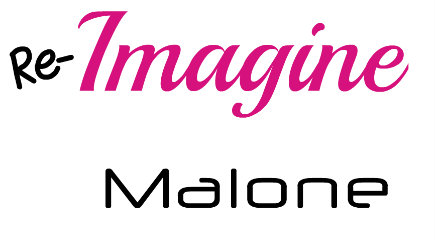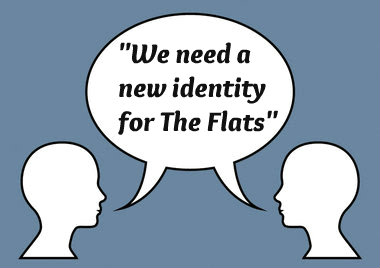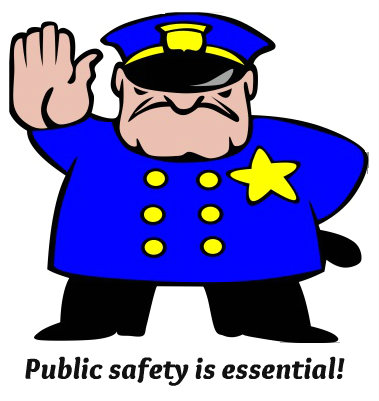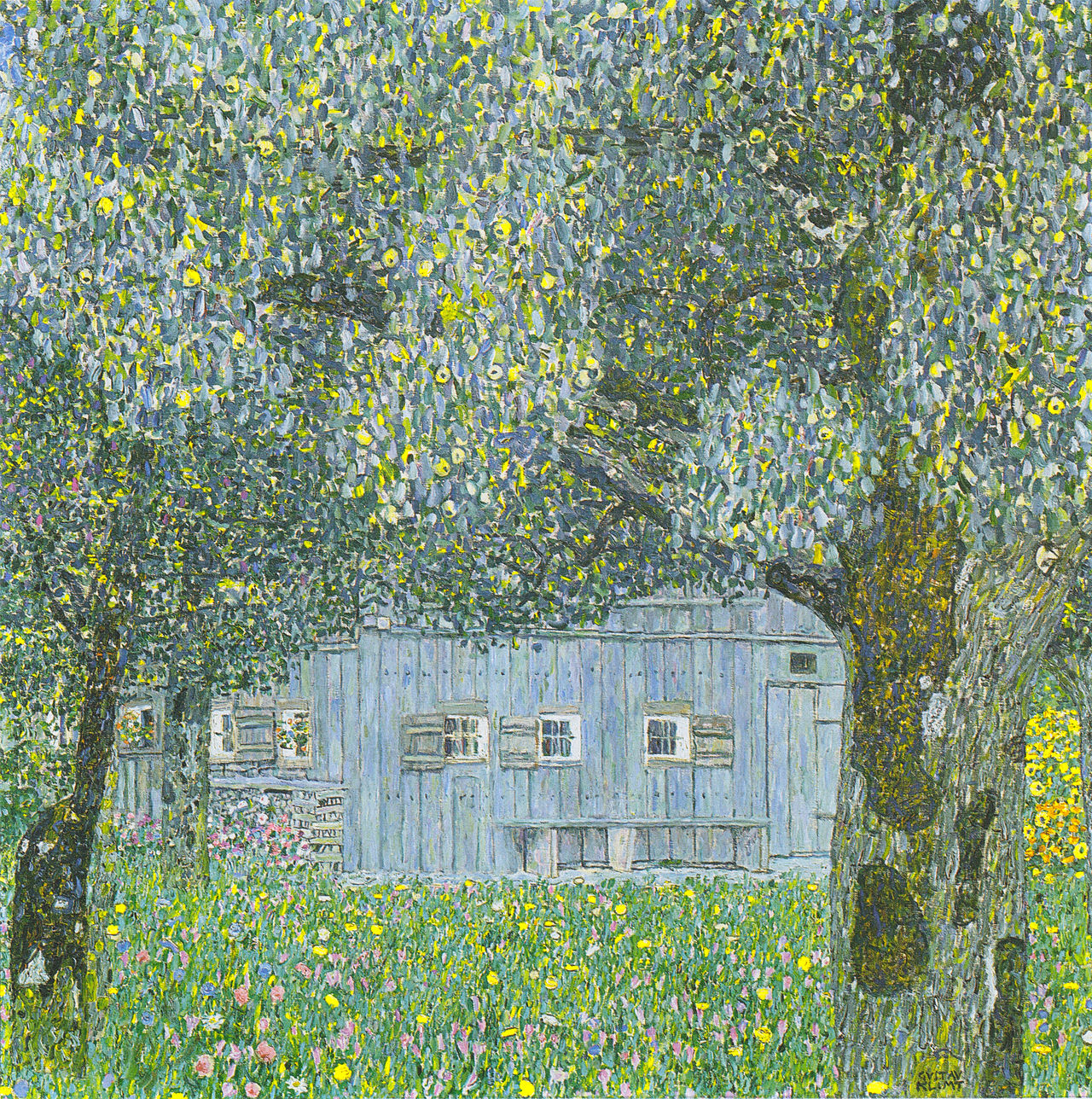
“Re-imaging Distressed Communities: A Strategy to Reverse Decline and Attract Investors”
.
—by Catherine Toups* and James H. Carr† (Spring 2000)
Recasting the image of a community is a potentially powerful tool to promote revitalization in distressed inner cities. While neighborhood leaders and redevelopment professionals struggle with the overriding tasks of earning community trust and participation, structuring real estate deals, raising money, and gaining political support, the challenge of turning around the community’s image may be relegated to the sidelines.
It is, however, a critical task: If a community plagued by a public image of abandonment, crime, and blight can reimage itself early in the process, it is better positioned to attract new residential and commercial development and engender a new sense of community pride and hope in the future among current residents. Across the country, formerly distressed communities have repositioned themselves with remarkable results.
This article outlines strategies that can be used to recast a community’s image and illustrates how such techniques have been used successfully. One of the primary strategies often used to change the perception of a neighborhood is giving it a new name that creates a positive image, possibly highlighting historic or positive elements in the community. Often, a logo is created to reinforce the name with a graphic image. Other reimaging techniques include packaging creatively the community’s unique or historic assets, making highly visible physical improvements, and target marketing the neighborhood to carefully selected potential residents and merchants.

Identify Community Assets
An important first step to recasting a community’s image is to take stock of its physical, social, and human resources. Engaging stakeholders — neighborhood groups, community development associations, merchants, local government and institutions, the school district, churches, local foundations, and interested corporate citizens — in the community’s future is a critical part of this process. Together, the stakeholders can identify the community’s assets, incorporate them into an identity, and envision a new image.
In inner cities across the country many eyesores are actually hidden assets: rundown old houses, busy streets, vacant warehouses, boarded up buildings, empty lots. They often possess an infrastructure no greenfield could begin to compete with — and offer some advantages that other trendy, desirable neighborhoods yearn for, such as adequate parking and access to mass transit (see You’ve Gotta See the Trees in the Forest).
The vision and design of a revitalization initiative should identify and build on a neighborhood’s strengths, or assets. In some cases, it is an area’s proximity to downtown employment, or potential as an education center, or its rich history or architecture. In others it is the well-established network of local community development organizations, socially significant churches, or untapped resources that can contribute to revitalization.
One strategy for making the most of the community’s assets is to select or create a physical “heart” or “town center” that seems to reflect the character of the neighborhood. This could be a commercial node, a public space such as a park or entertainment area, or an architecturally distinctive building or identifying symbol that can be replicated in a logo and on signage.
In Kansas City, Missouri, the “heart” chosen by community leaders of the old jazz district was the intersection of 18th and Vine Streets. Now recast as a historic jazz area with a museum, restaurants, and clubs, until recently 18th and Vine was a place where few people would venture at night.
Sometimes identifying the community’s heart involves turning a negative attribute into a positive. The defining feature of Frankfort, Pennsylvania, is an elevated railway. It plows through the main Frankfort Avenue as a big, noisy intrusion. Instead of trying to mitigate it or ignore its existence, the town adopted the image of the elevated railroad with its broad truss supports as the graphics on street banners and logos. What was a negative is now celebrated for its nostalgia value.

Create a Distinct New Identity
The process of identifying the community’s assets helps the stakeholders understand their potential value and may suggest a new identity—perhaps even a new name that could help recast the neighborhood’s image. If it is based on historic roots or a neighborhood amenity or asset, renaming the community can be a source of pride for existing residents and a symbol of positive change for prospective new residents (see What’s In a Name?).
This is particularly true in neighborhoods formerly known by the name of a dominating, distressed public housing development, such as Columbia Point on Boston’s waterfront. Now a 1,238-unit mixed-income rental community called Harbor Point, Columbia Point was a public housing project considered so dangerous that ambulance crews and fire fighters refused to enter it without police escorts. Two-thirds of the revitalized development consists of market-rate housing with suburban-style amenities that include a waterfront park, a clubhouse, and tennis courts.
Renaming, combined with other upgrade efforts, also worked for the Park DuValle neighborhood in Louisville, Kentucky. This lower-income African-American neighborhood is spread along an elegant parkway and now offers New Urbanist-style housing with curbside parking, gridded streets, and small porches. But when it was known as West Louisville, it was a rundown, super-block public housing project divided by an elevated expressway and full of abandoned storefronts. Developers created a “blank slate” and coined the new name for a fresh start.
Sometimes renaming an area either removes the asset itself or goes against the desires of residents-even if the name is part of the problem. While a neighborhood’s name may have long-standing negative connotations in the larger community, it may also have special historical or ethnic meaning for the neighborhood’s residents. If there is ambiguity about whether to retain a neighborhood’s name, one approach is to keep it while finding new monikers for smaller areas within the target redevelopment site. For example, a housing and/or retail development near a university could be called University Place, or a new retail development in the heart of the community could be named Commerce Square.

Package and Build on Assets
Creatively packaged hidden assets could complement the community’s identity strategy and reveal its potential for private investment. Identifying and “packaging” assets to residents and potential investors should be a priority (see Imagine How It Could Be). It is helpful to create “community asset maps” to visually show what a neighborhood has to offer: access to mass transit, good housing stock, historic buildings, proximity to employment centers, potential parkland.
Dennis Frenchman, professor of “The Practice of Urban Design” at the Massachusetts Institute of Technology and principal of ICON Architecture, points to Lowell, Massachusetts, as an example. Lowell was an abandoned mill town in the 1970s, with high unemployment, millions of vacant square feet of mill space, and a compelling story: its own history.
Because of the negative image of blight in the 1970s, city planners had started tearing down the old buildings before realizing they were assets. City leaders shifted gears and started investing public money in places that could tell a story, installing mini-museums in formerly derelict mill complexes. The buildings represented a significant story in the American experience, and the strategy caught on.
“Basically, in this way, they recycled all of the mills in the downtown,” Frenchman said. Mills and other historic assets, such as the canals, were adapted for art and recreational uses. Some of the old mill buildings were rehabilitated for housing, eldercare facilities, and high-tech business. Eventually, the town’s old infrastructure evolved to support a diversified new economy.
Using stories and places and heritage and culture as a way of reinventing, or reimaging, a place can be enormously successful, Frenchman says. He compares it to the way people perceive the black and white drawing that looks like either a vase or two faces. “People might see it as two faces, and you want them to see it as a vase. Once they see it as a vase, they can’t move back to seeing it as anything else. It’s hard to get people to see one from the other, but once you’ve done it, you’ve done it.”

Make Highly Visible Physical Improvements
Another important early step is to create the perception that change is already occurring. Strategic physical improvements can make an immediate and visible impact. Residents and community organizations can clean up trash and remove graffiti to make a start, but a critical element is ensuring that the local government delivers basic services.
Demanding equal government services may benefit an emerging community far more than demanding special development subsidies. The number-one role of government is to take care of the basic infrastructure, and government funds to redevelop distressed neighborhoods are useless without the basics. A community can reasonably expect the city to which it pays taxes to maintain the roads, sidewalks, and parks; condemn and demolish ramshackle, abandoned buildings; landscape public areas; haul away the trash; and provide whatever other services are made available to the rest of the city. As part of the community’s reimaging strategy, the local government must be urged to fulfill its responsibility to the neighborhood-it is, after all, in the city’s and local residents’ best interests. At the same time, the community can demonstrate to city leaders its commitment to revitalization by taking small steps to spruce up the area.
A physical turnaround can be sparked by a simple task. The West Farms Estates neighborhood group in the Bronx decided to repaint all its fire escapes dark red, creating a visible sign that something was going on the neighborhood. “In the short term, a bunch of buildings with rusting fire escapes were all painted,” said Ken Bowers, senior planner at Abeles Phillips Preiss & Shapiro, Inc., a New York City planning and real estate consulting firm. “I can’t say to you that first the fire escapes were painted, and the next thing all the housing units were rehabbed. But I can say that it created an increased feeling of community pride-just by undertaking a simple task.”
Another short-term project that could become a sign of hope and renewal is creating a community park or garden. In the formerly industrial neighborhood called Eastern North Philadelphia, neighborhood residents turned a junkyard into an outdoor theater park. “It was nothing fancy-just an area with a movie screen where people could sit in the yard and watch a film together. It was a low-cost initiative that addressed a blighting influence in the neighborhood and projected a community focus,” Bowers said.
He injects a cautionary note, however, about the inadequacy of such projects to bring about change on their own. “Each of these elements has a certain shelf life,” Bowers said. “If the area doesn’t upgrade, a community is soon back to where it started. You must launch complementary actions to make sure that your initial action doesn’t go to waste.”

Address Barriers to Revitalization
While cracked curbs and graffiti-covered buildings may deter real estate agents from steering clients to a particular neighborhood, such problems are fixable. Resolving the often-overriding issues of public safety and school quality are largely beyond the community’s control. Even if the neighborhood succeeds in getting the local government’s attention and assistance, systemic problems can take years or even decades to reverse. In most declining or deteriorated low-income neighborhoods, education and safety inevitably constitute major barriers to new investment.
Charter schools are cropping up in many inner-city communities as one response to inferior public schools. In other cases, communities try to work around the issue by marketing inner-city neighborhoods to singles, young childless couples, and empty nesters. Because only about a quarter of the nation’s households now consist of married couples with children under 18, local school quality is not the primary concern for many households.
Dealing with crime is a tremendous challenge, and often it is simply moved from one place to another. Incremental strategies may help, however. Neighborhoods can identify hot spots where police concentrate their efforts, install extra street lighting, form neighborhood watch groups, and encourage neighborhood institutions, such as hospitals or universities, to install security cameras.
Because criminals tend to congregate in lonely places, community development organizations try to attract businesses that bring more pedestrian traffic. But projecting a clean, safe image is difficult to do without some major investment, such as targeting vacant buildings for reuse or locating police substations in high-crime blocks.

Market the Neighborhood
Once a community has developed a vision of its new image and packaged its assets, a marketing and public relations strategy can be used to communicate what it has to offer.
Generally, a neighborhood marketing strategy includes components such as development of a theme and logo that incorporates the community’s distinctive identity, a communitywide signage and street banner program, and an aggressive public relations strategy (see This Just In).
A neighborhood resident or merchant may have the skills to provide these specialized communications services, or a developer with an interest in the neighborhood might be persuaded to donate the services. A local college or university with communications or planning departments may be willing and able to help. The community might also seek a grant from a philanthropic organization to hire a communications firm.
Target marketing a neighborhood can be a useful tool for distressed communities that want to project a specific image to a certain segment of the population. This generally means targeting moderate-income working households who may be attracted by the neighborhood’s location, accessibility to employment, historic resources, or other assets (see Build It and They Will Come).
The marketing strategy may also include promoting commercial opportunities with the new image. If developers can be attracted to the community based on its new image, they are likely to create brochures and marketing packages to provide data about the community to prospective investors and home buyers. This information might include the neighborhood’s vision for its future, data on land use, demographic and economic information, and graphics showing transportation and access.
A public relations strategy might include contacting local news organizations to explain neighborhood plans, conducting ceremonies for groundbreakings and milestones, and developing community newsletters. To generate activity and involve all stakeholders, the public relations strategy could include organizing festivals and other community events to celebrate, publicize, and take pride in the community.
The Historic King Business Improvement District (BID) in Milwaukee worked with the city and state to attract international or regional events to King Drive in the mid-1990s. One of the biggest successes was securing a leg of an international cycling race that draws 6,000 people each year. Attendees jostle for space on teaming sidewalks and cameras from around the world capture the event.
BID Executive Director Randall P. Roth said that the goodwill brought by such a race cannot be bought. “It brings people who would otherwise never come here in a million years.”

Conclusion
Over the past few decades, distressed communities have relied primarily on government programs to spark revitalization. As they increasingly focus on private investment as the engine driving redevelopment, it will be important for communities to reposition their approaches to meet this new challenge. Many of the reimaging strategies discussed in this article are borrowed from for-profit developers whose techniques have stood the test of time and proven successful in the competitive marketplace.
More and more, developers, financial institutions, and middle-income households are focusing on the assets of distressed communities and discovering a variety of exciting opportunities. In order for a community to capitalize on its assets, a thoughtful, well-developed identity, image, and marketing program is instrumental to spark new development while ensuring that investments are consistent with the community’s vision.
.
Catherine Toups* is Managing Editor of BuildingBlocks and a Senior Research Fellow at Fannie Mae Foundation.
James H. Carr† is Editor of BuildingBlocks and Senior Vice President for Innovation, Research, and Technology at Fannie Mae Foundation. This article is based in part on the writings of Diane Suchman, a planner and community revitalization consultant.
